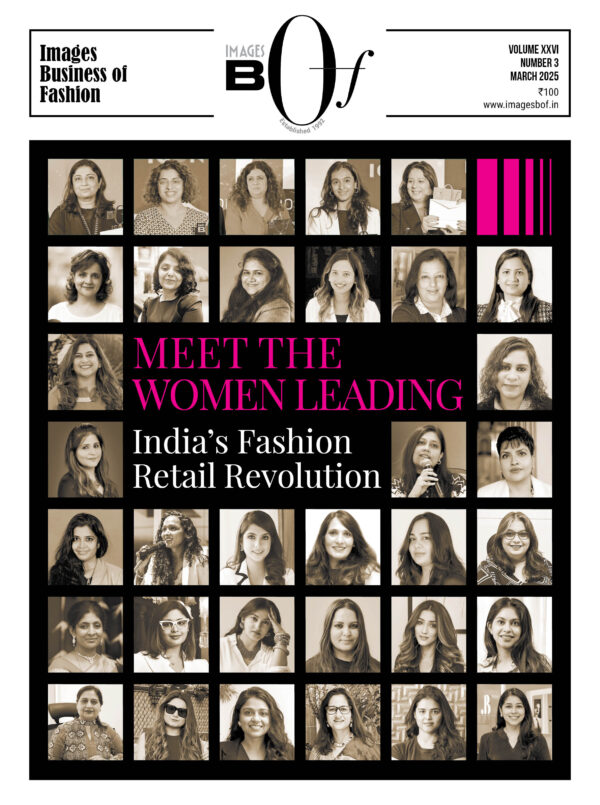There was a time when retail was only about the product. If you had a great product, the customer would buy it. But over a period of time, technology evolved, the online space grew and with this came the age of convenience. Customers started looking for convenience anytime, anywhere – free home delivery, COD, free returns, ease of returns. Today’s customer has evolved and now wants the best of both worlds – he wants both quality and convenience.
Companies with a customer experience mindset generate 4-8% more revenue than their competitors on average. As a result, the customer-first strategy has become a competitive advantage, key differentiator, loyalty booster, and a driver for repeat purchase.
Also, as a category, fashion has lower barriers to entry as compared to other consumption verticals. Numerous new, small players —typically digital-first — are redefining customer engagement and shopping experiences through social media and data-driven personalisation. On the other side, brick-and-mortar stores are seeing a resurgence of their power as ‘theatres’ for customised in-store experiences that not only surprise and wow, but also educate the consumer through storytelling and human interactions.
Retail Experience of the future will be a mélange of all channels. So then, with the sweeping change in the consumer behaviour landscape, what should the future of 360-degree fashion experience look like?
In a session held at India Fashion Forum 2024, fashion retailers from across the spectrum shared their views on how to make customer experience great for fashion consumers once again. On the panel of experts were:
- Lavanya Nalli, Vice Chairperson, Nalli
- Manish Kapoor, MD & CEO for India, Pepe Jeans London
- Rohiet Singh, COO, PVH Arvind Fashion Pvt Ltd (Tommy Hilfiger & Calvin Klein)
- Sanjeev Rao, CEO, Being Human Clothing
- Sugam Asani, Chief Brand Officer, BESTSELLER India
- Sukanya Dutta Roy, MD, Kama Ayurveda
The session was moderated by Rajesh Jain, MD & CEO, Lacoste India.
Using Technology to Enhance CX Manish Kapoor, MD & CEO for India, Pepe Jeans London – whose brand was predominantly offline earlier – spoke about adopting new technology. He said that earlier retailers were artists, but now they are transitioning into scientists.
“I keep telling my team that we are a technology company. We’ve basically evolved. Marketing is changing. Brands create a lot of content around their products, which includes more than just campaigns. This is a big part of user experience. For example we put up screens in our stores and customers can see how clothes look better on these screens and this content converts into sales for us,” he said.
“Think of this as personalized recommendations in store – long before online recommendations came in. Our staff was also trained in giving personal attention to consumers long before technology was a thing,” he said.
He said that one of the reasons retailers started relying on technology and data was the fact that store staff changed every few years. Staff moved out or got promoted and so personalized human recommendations became tough. Thus, retailers started relying on data to know their consumer better.
“We are using technology to gain insights into what the consumer wants and to see how we can bring about differentiation in comparison to other similar products. Also, we see branded products as something we can convey a story through. All this helps enhance consumer experience both offline and online,” he said.
He said a lot more can be done for online consumers – delivery timelines, product ingredients, sustainability in terms of traceability. “All these are experiences that matter a lot on online,” Kapoor added.
Delivery Timelines
“Of the experiences that Manish Kapoor mentions, delivery timelines are the most important,” said Rajesh Jain, but asking whether it really mattered if the consumer got clothes a few days late since it wasn’t a commodity that would go stale.
Sugam Asani responded to this saying that it did matter, but it was also important for an organization to not hurry up and to make no mistakes in sending the product. He added that the courier / last mile companies which represent the brand should also be chosen carefully.
 “When e-commerce started, it was almost a week before consumers would get the products they ordered. So, the time taken for deliveries has reduced in absolution over the years. And while I believe that we should deliver faster, the fact of the matter is that we cannot do it profitably as of now,” he stated.
“When e-commerce started, it was almost a week before consumers would get the products they ordered. So, the time taken for deliveries has reduced in absolution over the years. And while I believe that we should deliver faster, the fact of the matter is that we cannot do it profitably as of now,” he stated.
Training the Staff on Customer Variation
Rajesh Jain said that while online, the challenge was delivery timelines, offline the challenge was a well-trained store staff. “For example in Nalli, the same staff member is handling a consumer who wants a `600 sari as well as a consumer who wants a `2 lakh sari. How do they change their mindset, because this completely defines positioning? Most of us are either premium positioned or value positioned – this is almost like an aspirational position,” he asked.
Lavanya Nalli explained this saying, “Most of our stores are large format and a lot of our staff is tenured. In our flagship store, the average tenure is around 18 years. This just goes to show that their knowledge is institutionalised and passed down. Now this means that the staff knows the product really, really well.”
She said that new hires get one week of apprenticeship, a couple of weeks of apprenticeship training and then they are on their own but under the watchful gaze of a most senior salesperson. “We also hire a very high number of sales people per square foot, so that is one good business strategy. Everybody who we hire gets a very immersive indoctrination through this experience and we ensure that they are familiar with the product. At the end of the day, what a brand cares about is having staff who have the ability to grasp the product and who are tuned in to the consumer.”
In Store Experience
Sanjeev Rao stated that they work very innovatively and creatively to give an amazing experience to their customers – both in store and online – so that they come back to Being Human Clothing again and again, especially since they have opened outlets in Dubai and Canada and have become one of the few, truly multi-national Indian brands.
“According to us, quality and service is basic hygiene in the business of fashion. This is important because the for target audience that we have – Gen Z and Millennials – brand loyalty mostly means nothing,” said Sanjeev Rao. He said that along with this, another factor that is fast becoming an important hygiene element is technology.
“Discovery is now happening on the phone. People are using social media and messages to discover new brands and products and so all brands are on social media to stay relevant – they do good photo shoots, video shoots and campaigns on social media to showcase their product where they will be well discovered and talked about. Digital investments have gone up,” he said.
“If you keep all of this as a standard, then customers have a purpose to come in. That is what we drive as a brand,” he added.
He further explained that brands are picking up on trends to design their collections. “We upcycle and recycle because it comes naturally to us. We prefer to communicate all of this to customers digitally. Rather than spending 6-8 lakh on a Carter Road hoarding in Mumbai, we use the money to digitally woo consumers. We geo-tag, we target specific buckets of consumers who want say our range of PET bottle recycled denims and who want to explore our tie up with Fairtrade International. This is fashion retail at its highest level.”
Aside from this, Sanjeev Rao stated that they use digital to communicate things like trends of the season, colours and shades of the season to consumers. “All of this is hygiene and all of this helps in creating a superlative consumer experience,” he explained.
He also said that Being Human Clothing has started a denim exchange program – a new innovation, wherein they take back old denims of any brand and then an NGO that they work with upcycles them into tote bags and sling bags. “We then call the consumer back and give this new product back to them. That is the experience and that is going above and beyond to keep consumers coming back,” he said.
One Brand, One Voice: Unified CX
Aside from apparel, another mainstay of the fashion world is the beauty segment. “Beauty has higher engagement than apparel because you use it on your skin,” said Sukanya Dutta Roy, MD of Kama Ayurveda.
She explained that the segment has two types customer – the offline consumer who prefers physical discovery, touch and feel, and the online consumer who is used to getting a lot of information which is built into the product story.
“Both are important customers and there is a lot of correlation between the two – you could have been reading about a product online and you want to experience it offline, you bought something offline and you are happy, a fan of the brand and you do your replenishments online. What is equally important is that the communication and the strategy on how brands approach the consumer stay consistent.”
“It’s the consumer’s choice on where he/she interacts with the brand, but the brand story, the brand philosophy, the brand product positioning, the brand’s portfolio is common and should be seamless across platforms – one brand, one voice,” she added.

Rohiet Singh, COO, PVH Arvind Fashion Pvt Ltd (Tommy Hilfiger & Calvin Klein) said that their promise was ensuring the customer got the quality he was looking for when he was shopping at brands like Tommy Hilfiger & Calvin Klein.
His brand stores – which online, offline, EBOs, MBOs, company-owned stores and even franchise stores – are always clean and welcoming. “We make sure that the consumer is always comfortable. This is a convenience and an experience as far as we are concerned,” he said.
He said that his brands practiced hygiene like speed of service, special attention to all consumers, a promise of consistent quality and the shortest possible delivery times.
Nina Lekhi, Founder, Baggit chimed in from the audience here, asking Rohiet Singh whether their offline and online strategies were different or the same. He answered saying,” We were one of the last movers online because of the deep discounting that the online space played on. Customers would try offline but buy online and we didn’t want to be in that situation.”
“So, our promise to our customer is this – we will keep the quality consistent on all platforms and the pricing will also be the same,” he concluded.



